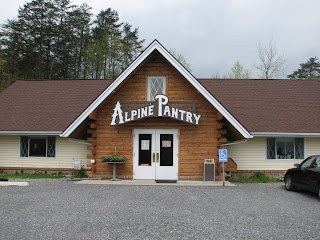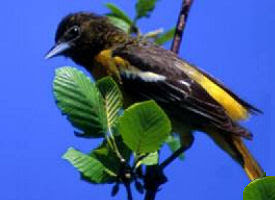A few facts on the Province of Alberta for our friends that we meet along the road in our travels or others that read our blog just for fun.
The
population of Alberta is 3,455,062--2003 Stats.
Land area-248,000 sq. miles
Alberta’s climate is highly variable. Summer typically runs between May and September, days are warm and evenings are cool. Winters are cold with heavy snowfalls, particularly in the Rocky Mountains.
The
largest cities are Edmonton and Calgary.-More than half of the people live in these two cities. Immigrants came from Britain, Western Europe, Eastern Europe, the East and Southeast Asia.
Ethnic backgrounds - British (44 percent), German, Ukranian, French, Scandinavian, Dutch, and many other countries.
Some history on Edmonton, Capital of Alberta, Population, 730,372-2006 Stats
5.000 years before European explorers and fur traders arrived in the Edmonton area, the land was populated by various Tribal Nations. In 1795, the Hudson's Bay Company established its first trading post near the present site of Fort Saskatchewan in order to trade fur with First Nations. The fort was moved several times, to be settled permanently in 1830 on land that is today known as Alberta Legislature Grounds. The fur trade boomed for many decades. In 1870, the Canadian government bought the land from the Hudson's Bay Company to open it for settlement. In 1892, Edmonton was incorporated as a town. At this time, about 700 people called Edmonton their home. In 1898, the Gold Rush Edmonton became the outfitting center for many prospectors heading for the Yukon. By 1904, Edmonton had a population of 8,350. Soon after, when Alberta joined the Confederation, Edmonton was selected as provincial capital. In 1908, the University of Alberta opened its doors. Edmonton entered a frantic boom period when Strathcona amalgamated with Edmonton in 1912, combining their population to over 40,000. In the 1930s Edmonton became the "Gateway to the North" flying medical supplies, food and mail to remote northern communities. Edmonton's face changed forever when oil was discovered in Leduc in 1947. Overnight Edmonton became the Oil Capital of Canada and Edmonton's population doubled within a decade. Still today, the oil and gas industry remains the city's economic cornerstone. The 1960s brought the Edmonton International Airport, the Citadel Theatre, the 27-story CN Tower and the Provincial Museum of Alberta. The 1970s brought a further boost to development of Edmonton and the Northlands Coliseum (today Skyreach Centre) opened its doors to mark the NHL's best ice surface. In 1978, Edmonton became the first city with a population smaller than 1 million to have a Light Rail Transit (LRT) system. With the opening of West Edmonton Mall in 1981, Edmonton entered the Guinness Book of Records with the world's largest shopping and entertainment complex. In 1995, Edmonton celebrated its 200th year.
HISTORY-The first people were the: Slavey, Chipewyan, Kootenay, Beaver, Cree, Sarcee, Blood, Piegan, Gros Ventre and Blackfoot.
- In the north they hunted moose, caribou and deer, fished and gathered plants and berries. They used bark canoes to travel up and down the streams.
- On the plains they hunted the bison and lived in teepees.
- Anthony Henday ( European explorer and fur trader ) came to Alberta in 1754.
- Fur traders built trading posts on the Athabasca River and North Saskatchewan River.
- Forts were built to keep law and order.
- The First Nations traded furs and received guns, blankets and metal goods.
- Alberta grew when the railroad was built in 1883. Early settlers were ranchers from England and the United States. Immigrants came from Ukraine and many parts of Europe to farm.
- The main rivers are the Peace River, North and South Saskatchewan River, and Athabasca River.
- There are icefields in Banff and Jasper National Parks.The icefields help to fill the rivers.
- There are five national parks.Banff National Park is the oldest national park in Canada.Wood Buffalo National Park is the home to about 2200 wood buffalo (endangered).
- A large mountain range ( Rocky Mountains ) is along the western border. The badlands ( dry, sandy, rocky area) are in southeastern Alberta. Northern Alberta is covered with forest and muskeg. The rest of the province is on a great plain or prairie.
Alberta is one of the three prairie provinces. It is the fourth-largest province. Saskatchewan is east of Alberta; British Columbia is west. The Northwest Territories are north of Alberta. The state of Montana is south. Alberta was named after Princess Louise Caroline Alberta of Britain. Alberta's motto - "strong and free". Alberta is known as Canada's "energy province".
Official Song
Alberta
The official song pays musical tribute to the province’s geography, industry, history and cultural diversity. Alberta was composed by Mary Kieftenbeld as part of a contest to find an original official song in time for the province’s Centennial in 2005.
Alberta Tartan
 The colours represent the following:
The colours represent the following:
Green - Alberta’s forests
Gold - Alberta’s wheat fields
Blue - Alberta’s clear skies and sparkling lakes
Pink - Alberta’s wild rose
Black - Alberta’s coal and petroleum.
(adopted 1961 due to the efforts of the Edmonton Rehabilitation Society for the Handicapped, now Goodwill Industries). Dress Tartan
The Alberta Dress Tartan complements the Alberta Tartan and can be worn for dancing, special occasions and formal attire. It includes the same colours as the Alberta Tartan and adds large sections of white, a symbol of Alberta’s clean bright snowy days.
(adopted 2000)
 The provincial flag was adopted on June 1, 1968 and displays the shield of arms of Alberta on a blue background. The flag is proportioned twice as long as it is wide, with the shield in the center at seven-elevenths of the width of the flag.
The provincial flag was adopted on June 1, 1968 and displays the shield of arms of Alberta on a blue background. The flag is proportioned twice as long as it is wide, with the shield in the center at seven-elevenths of the width of the flag.
Wild Rose is the Provincial Flower
You don't have to search far to find the official flower of Alberta, the Wild Rose. This beautiful flower grows throughout Alberta and other regions in Western Canada. This prolific pink flower with prickly branches produces a rubbery berry known as rosehip, picked late in summer by jam makers and homemade tea producers. Rich in vitamin C, rosehips are used to fight the common cold and many types of infections, most commonly, bladder infections. Natives used them for many of the same reasons but applied them topically to the infected area in the form of a poultice. The Wild Rose became the official flower of Alberta in 1930.

Rocky Mountain Bighorn Sheep is the Provincial Mammal
The Rocky Mountain Bighorn Sheep was designated the official mammal of Alberta on August 18, 1989. Most impressive are the males with great horns that curl backwards up to 360 degrees. Prehistoric remains have been found in most of the river valleys across Alberta, suggesting that at one time enormous herds of Bighorn Sheep zig-zagged across the province. Today, the Bighorn is found mostly on grassy slopes in the Rockies. or along the shoulder of the province’s highways. 
Lodgepole Pine is the Provincial Tree. The Lodgepole pine has a very flexible wood that was once used by the native people to build tepees and lodges, hence its name. It grows 30 to 35 metres high and lives for 200 years. Its needles are strongly twisted. Its cones have scales with a curved prickle that is held closed by a resin bond. To open, the cones need to be exposed to intense heat from a wildfire or from direct sunlight. Most pure stands are therefore established on burn areas. The lodgepole pine is found in western Canada and the northwestern United States. Its wood is soft to moderately hard and light yellow in colour.
 The provincial bird is the Great Horned Owl
The provincial bird is the Great Horned Owl. A year-round resident of Alberta, the Great Horned Owl is identified by its prominent "horns" which are actually tufts of feathers. The Great Horned Owl has acute hearing as well as binocular vision, giving them excellent depth perception.

GrassRough Fescue, Festuca scabrella
Alberta has the largest area of rough fescue grassland in the world and is the only place in North America that hosts the plains, foothills and northern kinds of rough fescue. Rough fescue provides excellent year-round forage for wildlife and livestock, and
is a symbol of Alberta’s prairie heritage and the need for the conservation of our rich biodiversity of native grasslands.
(adopted April 30, 2003 due to the efforts of the Prairie Conservation Forum).

StonePetrified Wood
Commonly found in gravel pits throughout Alberta, petrified wood is the result of the deposit of microcrystalline quarts in the pores and cells of the fallen trees of the Cretaceous and Paleocene times, 60 to 90 million years ago.(adopted 1977 due to the efforts of the Alberta Federation of Rock Clubs)
 Their in-house bakery offers all types of bread, pies, cinnamon buns, apple dumplings, and many other delightful delectables. The bread is sliced, if you prefer, while you wait. The bacon is excellent, sliced at your request. The meat shop also offers all kinds of cheeses, and other items that one would expect to find in a meat shop. The store offers everything from home made jellies, many sugar free candy items , baking items, hand sewn aprons, bun cosies, etc., as well other items too numerous to mention. Mennonites here all dress according the old Mennonite style, ladies in long cotton dresses with bonnets; the men in black or brown pants with suspenders, a dark coloured shirt, and usually a black hat. The store is very, very clean, well kept, very nicely laid out and a real pleasure to shop in, not costly and I would recommend it to anyone. I bought some cinnamon buns with real butter icing! You just cannot walk in there and smell all the goodies, and walk out with none of them! Woody picked up bacon, which we needed.
Their in-house bakery offers all types of bread, pies, cinnamon buns, apple dumplings, and many other delightful delectables. The bread is sliced, if you prefer, while you wait. The bacon is excellent, sliced at your request. The meat shop also offers all kinds of cheeses, and other items that one would expect to find in a meat shop. The store offers everything from home made jellies, many sugar free candy items , baking items, hand sewn aprons, bun cosies, etc., as well other items too numerous to mention. Mennonites here all dress according the old Mennonite style, ladies in long cotton dresses with bonnets; the men in black or brown pants with suspenders, a dark coloured shirt, and usually a black hat. The store is very, very clean, well kept, very nicely laid out and a real pleasure to shop in, not costly and I would recommend it to anyone. I bought some cinnamon buns with real butter icing! You just cannot walk in there and smell all the goodies, and walk out with none of them! Woody picked up bacon, which we needed.






































 The Cumberland Narrows is a compact notched valley that
The Cumberland Narrows is a compact notched valley that 







